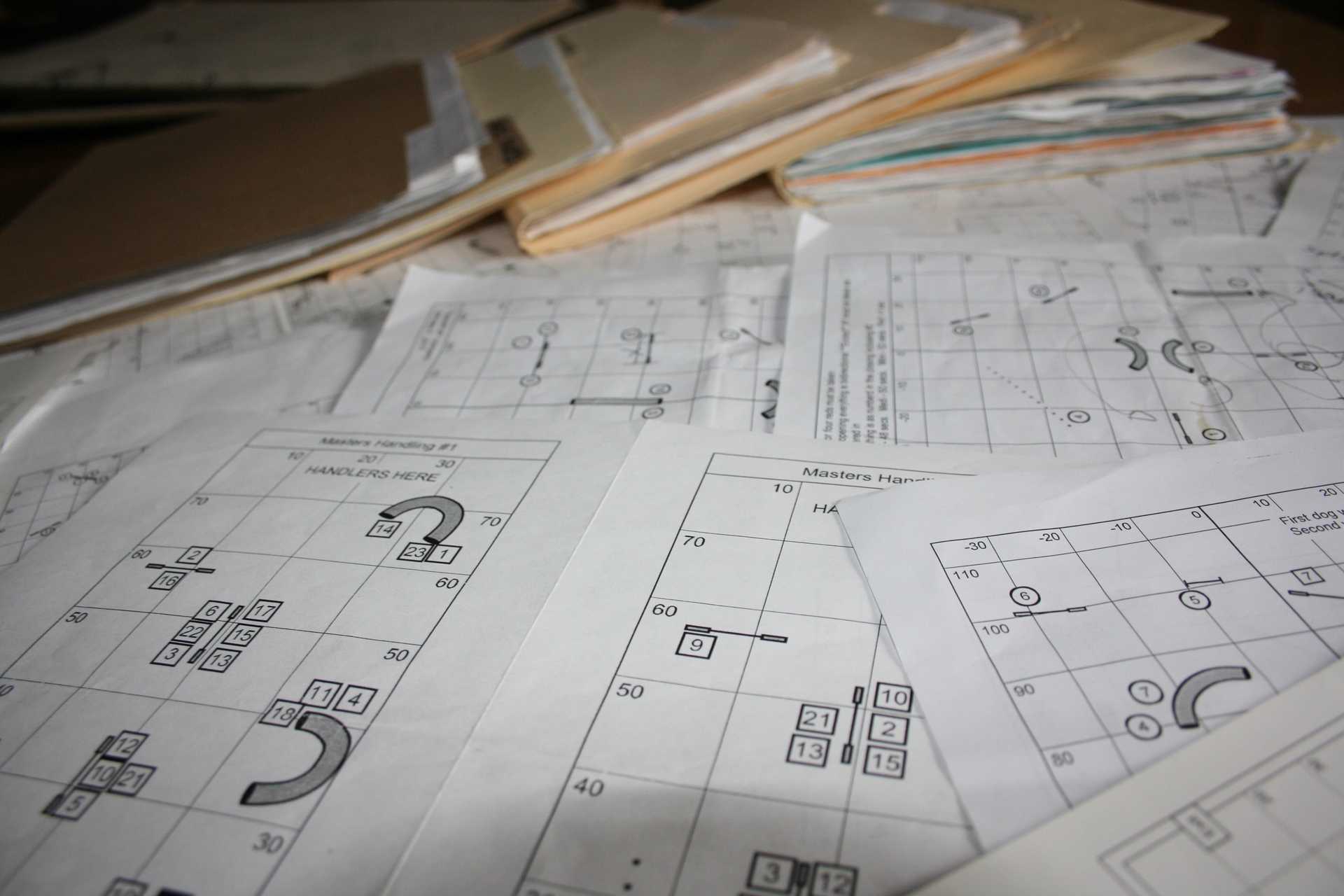How Would You Handle It? - Sequence 1
02 Nov 2007
UPDATE: handling thoughts posted
In recent weeks I’ve run some practice courses with interesting subsequences in them and I thought I’d start blogging them as little handling challenges I’m calling “How Would You Handle It?” I’ll post the course diagram and then a couple days later I’ll update the article and post the handling method(s) that were most viable.
This opening sequence of a longer course was devised by Nancy Reyes at For Your Canine in Schiller Park, IL. I’ve put a red barrier at the right edge of the course to let you know that there is a wall that makes up that edge of the ring. So your handling possibilities to the right of the jumps are restricted (there are about 4 feet from jump 3 to the wall and about 3 feet from jump 4 to the wall. Jump 4 is a winged jump and jump 5 is a winged double jump.
If you like please post your solutions in the comments and check back for some solutions in a couple days.
Handling Solutions
There are two “sticky” areas on this sequence where the handler has to decide what they are going to do. Getting from jump 3 to jump 4 and from jump 5 to jump 6.
Solutions

One question on this sequence is “which way to turn your dog at jump 3?” A lot of handlers initially turned their dog to the dog’s right over jump three as shown by the red dog path. As you can see by the dog’s path once the dog completes the Jump Wrap Jump Wrap Handling TipsJump Wrap Handling - With VideoJump Wrap/Wrap they see jump 4 but have no idea jump 5 is next; due to the wings on the jumps all the dog sees is the wall after jump 4. As faster handlers moved toward jump 5 they could save this by calling the dogs to take jump 5. But the dogs tended to have a trajectory that took them to the left over jump 5, away from jump 6.
Turning the dog toward the wall actually gives the dog the best path for jumps 4 and 5. There is plenty of room for the dog to get through the gap between the jump and the wall (about 4 feet). I found that a Rear Cross Learning the Rear CrossRear Cross at the “X” on the course allowed me to be closer to jump 4 while still turning Meeker to his left over the jump. A Front Cross Learning the Front Cross - VideoFront Cross could also work there too. Either way it is critical that you don’t get caught behind the wing of the jump. Once the dog is committed to jump 3 it is a sprint down the left side of jumps 4 and 5.
An option that we all would like to have done is shown by the blue handler path. A Front Cross (or a Blind Cross) at the “X” turns the dog to their left over jump 3 and then crossing the dog’s path again (Front or Blind) at about the 12-15 foot mark. Unfortunately, the distance between the wing jump at the wall made it so it wasn’t really possible to get through such a small space while running full speed. Another option along the blue path would have been to cross at the “X” and then Post Turn Learning the Post TurnPost Turn/Shoulder Pull/Pivot Turn with the dog on your right and let the dog pass and Rear Cross on the take off side of jump 4. Unfortunately that handling puts you behind your dog at the start of a 40 foot straight line sprint.
The key to getting from jump 5 to jump 6 was being with or ahead of your dog at the landing side of jump 5 so you could push your dog to the right. Fast dogs/slow handlers were punished by this sequence as the dog turned toward their left and the handler (along the red line) after jump 5. So it was critical to have been ahead of your dog at jump 3 and run fast down the line of jumps.
It would have been nice if you were slower than your dog to Rear Cross from jump 4 to jump 5 but the wings of the jumps, the proximity of the wall, and the minimum jump spacing made it difficult in practice.
Once handlers got the push to jump 6, as long as they didn’t give too strong of forward motion cues most dogs wrapped to jump 7 without difficulty. Handlers that kept moving forward without decellerating pushed their dogs wide to the off course jump.
I hope you enjoyed this little mental exercise!
If you enjoyed this article won't you please:  Thanks!
Thanks!

